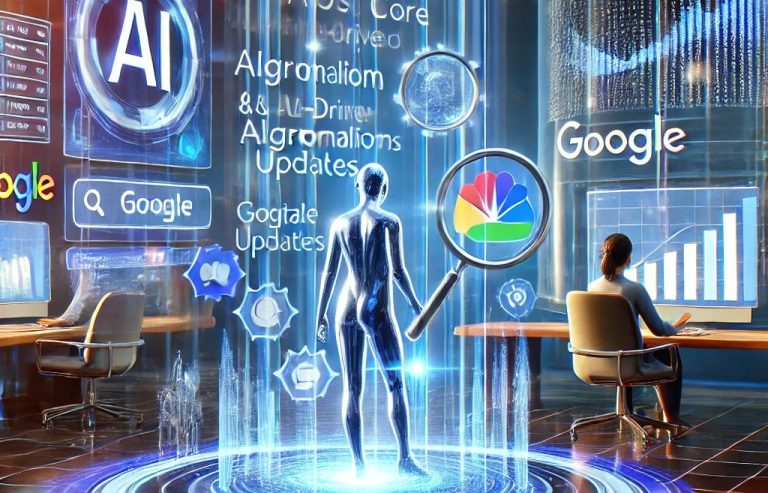Google has rolled out its latest core algorithm update, and if you’re in marketing, you should be paying close attention. The August 2024 update, finalized on September 3, is part of Google’s ongoing mission to make search more relevant and user-friendly. But, as always, these updates come with winners and losers. If your website has taken a hit in the rankings, it might be time to rethink your approach.
Let’s be clear: Google is not the enemy to most marketers although sometimes I feel like it is. Its updates are an opportunity for marketers to reassess their content strategies, understand what truly adds value, and deliver better experiences for users – or at least that is one way we can all look at it. This update, in particular, underscores the importance of high-quality, genuinely useful content—especially from smaller and independent publishers. But what does this really mean for us as marketers, and how can we stay ahead of the game?
Content Is (Still) King, but Now It’s Smarter
In every Google update, the importance of content quality remains a key pillar, but this time, it’s about being even more targeted. With Google emphasizing useful content that meets users’ needs, marketers have to think critically about whether their content is genuinely serving their audience. Is it answering the questions people are asking? Does it offer unique insights that can’t be found elsewhere?
Gone are the days when you could game the system with keyword stuffing or superficial blog posts. Google’s AI-driven algorithms are smarter, more discerning, and better equipped to differentiate fluff from substance. The August 2024 update continues to push that envelope, rewarding content that provides value and is structured in a way that is easy to navigate(
Google’s AI Overviews – A New SEO Frontier
One of the most fascinating shifts we’ve seen recently is the integration of AI in Google’s search results, specifically through its AI-generated overviews. According to reports, these overviews are now aligning with the top-ranking organic results about 99.5% of the time(
This is a dramatic shift from earlier this year when only a small fraction of these AI-generated overviews were connected to page one organic results. Now, optimizing for AI results is nearly identical to traditional SEO.
This should be a wake-up call for marketers. If you’re not optimizing your content for these AI overviews, you’re missing a massive opportunity. The time has come to think about how we can produce content that not only ranks well but is also likely to be pulled into Google’s AI-generated summaries. This includes focusing on authority, relevance, and the overall user experience.
Video and AI – Google’s Game Plan for 2025
Looking ahead, Google is making significant changes to its ad products too. One of the most notable updates is the phasing out of Video Action campaigns, which will be replaced by Demand Gen campaigns in 2025. This is another step toward multi-format advertising that is driven by AI insights and data(
For marketers, this means that the tools we’ve relied on are evolving, and we need to stay nimble to take advantage of new ad formats that drive performance.
How to Respond to the Update
So, what should you do if you’ve been affected by the August 2024 update? First, take a deep breath. These algorithm changes are an inevitable part of digital marketing, and they aren’t meant to penalize you—but they are a nudge in the right direction. Here are some practical steps you can take:
- Audit Your Content: Look at your website’s existing content and ask whether it’s truly useful. Is it answering relevant queries? Does it provide value, or is it simply rehashing what’s already out there? If your content isn’t serving your audience, Google isn’t going to reward it.
- Prioritize User Experience: Speed, structure, and navigation are critical. A well-designed site that loads quickly and is easy to navigate will always be favored by search engines. Google’s algorithms have become more adept at evaluating user behavior metrics, so don’t overlook this.
- Optimize for AI: With AI-generated overviews becoming more intertwined with organic results, your SEO strategy needs to reflect that shift. Make sure your content is authoritative and clear—those top spots are increasingly influenced by AI.
- Test Demand Gen Ads: If you’re running Video Action campaigns, it’s time to experiment with Google’s new Demand Gen ad products. These are designed to deliver better performance, so don’t wait until 2025 to start testing. Get ahead of the curve now.
The Bottom Line
At the end of the day, these Google updates are reminders that search engines are moving closer and closer to replicating how humans think. They want the best, most relevant content to surface for their users, and as marketers, we should embrace that challenge. It’s no longer about trying to trick the system—it’s about becoming part of it by delivering real value.
The August 2024 core update is not just a tweak to the algorithm; it’s a reflection of where marketing is headed. With AI playing a bigger role in search and advertising, we need to stay sharp, evolve our strategies, and continuously focus on delivering the best content possible.
Let’s use these updates as a catalyst to refine our approach and drive forward a more customer-centric marketing world.







Comments are closed.